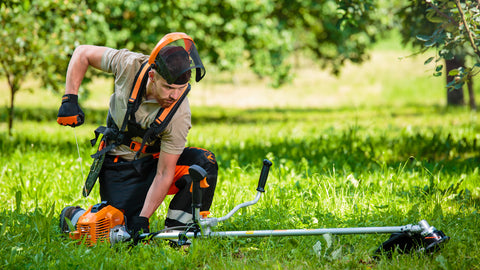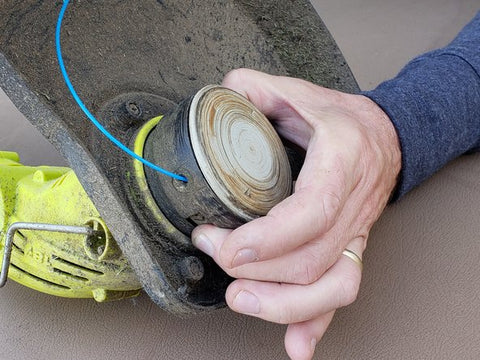Whipper snippers are indispensable tools in the gardener’s arsenal, capable of bringing precision to rugged landscapes and delicate touch to garden beds. While their buzzing blades carve beauty out of overgrown chaos, they, like all machines, are not impervious to the occasional hiccup. A well-maintained whipper snipper will generally serve you well, but even the most reliable of tools can stumble upon operational troubles. Understanding these potential pitfalls and knowing how to troubleshoot them effectively can be the difference between a well-manicured garden and an untended wild patch.
This guide is for everyone who value their time and peace of mind. We dive into common whipper snipper problems that might arise and distill the complexity of mechanical troubleshooting into clear, actionable steps. Whether it’s an engine that won’t start, a line that won’t feed, or an unexplained rattle that disrupts the tranquility of a gardening session, this guide aims to equip you with the know-how to address such issues swiftly and confidently.
With this knowledge, you will ensure that your whipper snipper remains not just a tool, but a trusted companion in your gardening endeavors, always ready to perform at its best.
Troubleshooting Common Issues
Regular maintenance can't always prevent every issue. Here's how to tackle problems as they arise, keeping your whipper snipper in prime condition.
1. Engine Won't Start

The engine is the heart of your whipper snipper, and when it doesn't start, it can bring your garden work to a halt.
- Fuel Inspection: Verify the fuel tank is not just filled, but filled with the correct type of fuel. Old or contaminated fuel is a common culprit in starting issues. For gas-powered models, use only fresh fuel mixed with the correct oil ratio.
- Spark Plug Check: Remove the spark plug and inspect it for soot, oil, or damage. A dirty spark plug can often be cleaned with a wire brush, but if it's significantly worn or damaged, replacement is the best option.
- Correct Choke and Throttle Settings: Incorrect settings can prevent the engine from starting. Your owner's manual will specify the correct positions for starting the engine — usually full choke if the engine is cold, and no choke for a warm engine.
- Pull Cord Integrity: Inspect the cord for wear and ensure it retracts properly. A cord that doesn't retract smoothly or is frayed will need to be replaced.
- Priming the Engine: For models with a primer bulb, press it a few times to get the fuel flowing to the carburetor. This can be particularly important in colder weather.
2. Engine Runs Poorly
An engine that starts but runs poorly can be frustrating and reduce the effectiveness of your whipper snipper.
- Air Filter Maintenance: A clogged air filter can impede engine performance. Remove the filter, clean it with warm soapy water, and allow it to dry completely before reinserting. Replace it if it's worn out.
- Spark Plug Upkeep: A spark plug in poor condition can lead to a rough-running engine. Regular cleaning and correct gapping are essential, and replacement should be part of your annual maintenance.
- Fuel Quality Check: Stale or contaminated fuel can clog the carburetor and affect the engine's performance. Always use fresh fuel and consider a fuel stabilizer if the whipper snipper won't be used for an extended period.
- Carburetor Tuning: An improperly adjusted carburetor can cause an engine to run rough. While you can adjust the carburetor yourself if you're experienced, it's often best left to a professional.
3. String Won't Feed or Breaks Frequently

A properly functioning trimmer line is key to the whipper snipper's cutting performance.
- Line Length and Loading: Check that the line is loaded correctly and is the right length. Improper loading or a line that's too short can prevent proper feeding.
- Cutting Head Cleanliness: Remove and clean the cutting head regularly. Debris can obstruct the line feed and cause it to snap prematurely.
- Appropriate Line Diameter: Using the recommended line diameter is vital. Lines that are too thin can break easily, while those that are too thick can jam the feed mechanism.
- Mindful Trimming Technique: Trimming technique can significantly affect line longevity. Keep the line away from hard surfaces and obstacles to prevent unnecessary breakage.
4. Excessive Vibration or Noise

Vibration or noise can indicate a mechanical issue that needs immediate attention.
- Fastening Loose Components: A thorough check of all bolts, nuts, and screws should be conducted regularly. Tighten any that have loosened to reduce vibration.
- Cutting Head Balance: Ensure the cutting head is attached correctly and isn't damaged. An off-balance head can cause vibration and noise.
- Engine Health Check: Excessive vibration from the engine may signal internal issues. If basic checks don't resolve the problem, seek professional servicing.
As the sun sets on a day’s work and the last blade of grass settles into its neatly trimmed place, the gardener’s satisfaction is often tied to the reliability and efficiency of their tools. Your whipper snipper, a vital component of this gardening satisfaction, demands a certain level of respect and understanding – respect for its complex mechanics and an understanding of how to coax it back to life when it falters.
This guide has walked you through the most common whipper snipper ailments, providing you with a deeper comprehension of its workings and the confidence to tackle issues that may arise.
Continue enhancing your garden mastery with insights from our comprehensive guide, a trove of valuable tips. For those eager to expand their garden care toolkit, our curated selection promises to complement your newfound troubleshooting skills.
Carry this guide with you, either in hand or in memory, and let it serve as the bedrock upon which your garden’s beauty is perpetually built.

